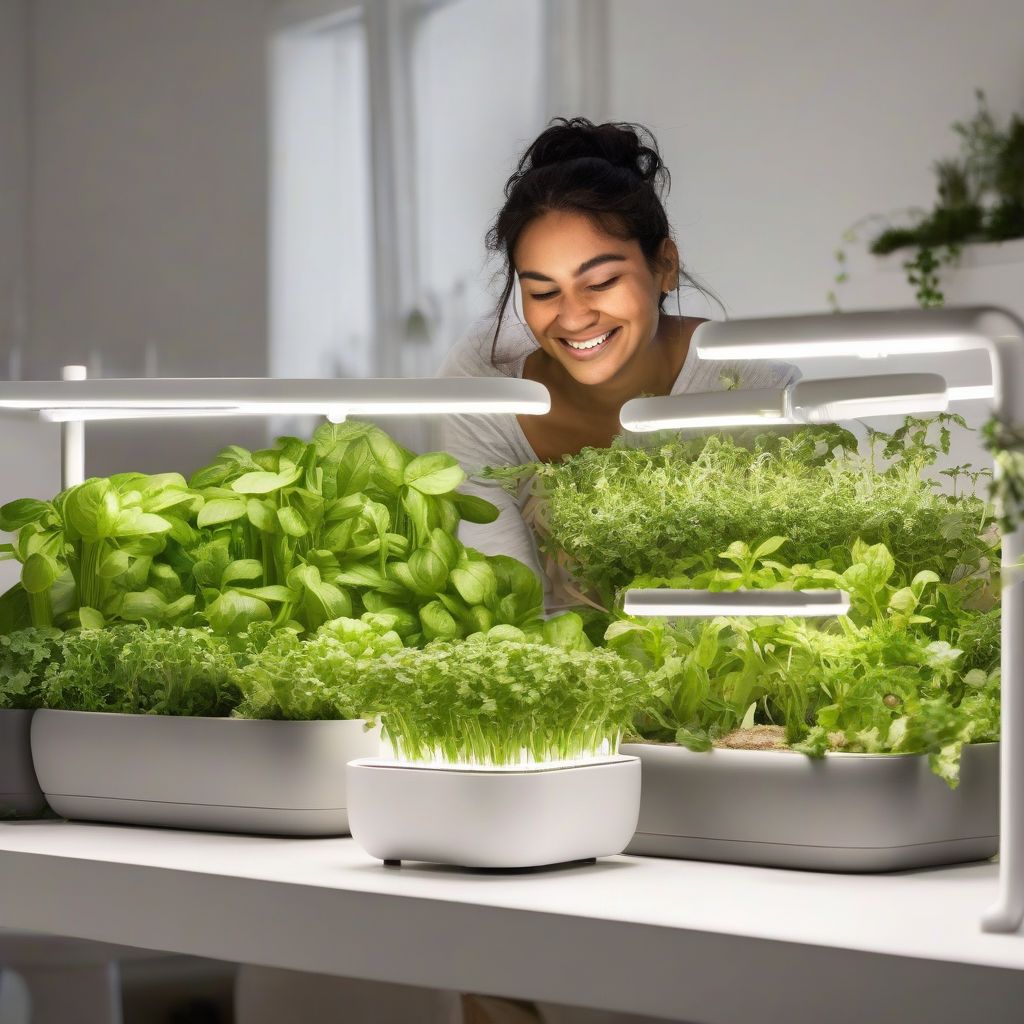Have you ever dreamt of plucking ripe tomatoes, crisp lettuce, and fragrant herbs right from your own backyard, no matter the season or space constraints? With the rise of smart gardening systems, this dream is now a tangible reality for many. These innovative systems empower anyone, from seasoned gardeners to apartment dwellers, to cultivate fresh, healthy produce at home. Let’s explore how you can leverage smart gardening technology to create your own personal Eden.
What are Smart Gardening Systems?
Smart gardening systems utilize technology to optimize and simplify the process of growing plants. They automate tasks like watering, lighting, and nutrient delivery, creating the ideal environment for your plants to thrive. Think of them as your personal gardening assistants, taking the guesswork out of growing and ensuring a bountiful harvest.
Types of Smart Gardening Systems
- Hydroponic Systems: These systems grow plants in nutrient-rich water solutions, eliminating the need for soil. They’re known for their faster growth rates and higher yields compared to traditional soil-based gardening.
- Aeroponic Systems: A subset of hydroponics, aeroponic systems suspend plant roots in the air and mist them with nutrient solution. This maximizes oxygen absorption, leading to even faster growth.
- Aquaponic Systems: Combining aquaculture (raising fish) and hydroponics, aquaponic systems utilize fish waste as a natural fertilizer for the plants. This creates a sustainable, closed-loop ecosystem.
- Smart Indoor Gardens: These compact, self-contained units are perfect for indoor gardening. They often feature automated lighting, watering, and climate control, allowing you to grow a variety of plants year-round, regardless of the weather outside.
Benefits of Smart Gardening Systems
- Increased Yields: Precise control over growing conditions leads to larger, healthier plants and higher yields compared to traditional gardening.
- Water Conservation: Smart systems use significantly less water than traditional methods, conserving this precious resource.
- Year-Round Growing: Indoor systems allow you to grow your favorite produce year-round, regardless of the season or climate.
- Space Saving: Vertical and compact designs make smart gardening systems suitable for even the smallest spaces, like balconies or apartments.
- Reduced Pesticide Use: Growing your own food allows you to control what goes into it, minimizing or eliminating the need for pesticides.
 Smart Food Cultivation
Smart Food Cultivation
Choosing the Right Smart Garden System
Consider the following factors when selecting a system:
- Space Availability: Determine how much space you have available for your smart garden.
- Budget: Smart gardening systems range in price, so set a realistic budget.
- Plant Preferences: Choose a system that’s suitable for the types of plants you want to grow.
- Technical Skills: Some systems are more complex than others, so consider your technical proficiency.
Getting Started with Your Smart Garden
Once you’ve chosen your system, follow these steps:
- Set Up Your System: Follow the manufacturer’s instructions carefully.
- Choose Your Plants: Select plants that are well-suited for your chosen system and your local climate.
- Monitor and Adjust: Regularly monitor your plants’ growth and adjust the system settings as needed.
- Harvest and Enjoy: Once your plants are mature, harvest and enjoy the fruits (or vegetables) of your labor!
Smart Gardening Tips for Beginners
- Start Small: Begin with a small system and a few easy-to-grow plants, like herbs or lettuce.
- Research Your Plants: Understand the specific needs of the plants you’re growing, including light, water, and nutrient requirements.
- Join a Community: Connect with other smart gardeners online or in person to share tips and advice.
- “Don’t be afraid to experiment. Gardening is a journey of discovery, and there’s always something new to learn,” says Master Gardener Jane Doe.
The Future of Food: Growing at Home
As technology continues to advance, smart gardening systems are becoming increasingly sophisticated and accessible. From automated nutrient delivery systems to AI-powered plant monitoring, the possibilities are endless. These advancements hold the potential to revolutionize how we produce food, empowering individuals to grow their own fresh, healthy produce at home, contributing to a more sustainable and resilient food system.
Conclusion
Smart gardening systems offer a convenient, efficient, and sustainable way to grow your own food. By embracing this technology, you can enjoy the satisfaction of cultivating fresh produce at home, regardless of your space or experience level. From reducing your environmental footprint to enhancing your culinary creations, smart gardening empowers you to take control of your food supply and connect with nature in a whole new way. What are you waiting for? Start your smart gardening journey today! Share your experiences and tips in the comments below, and let’s grow together!



